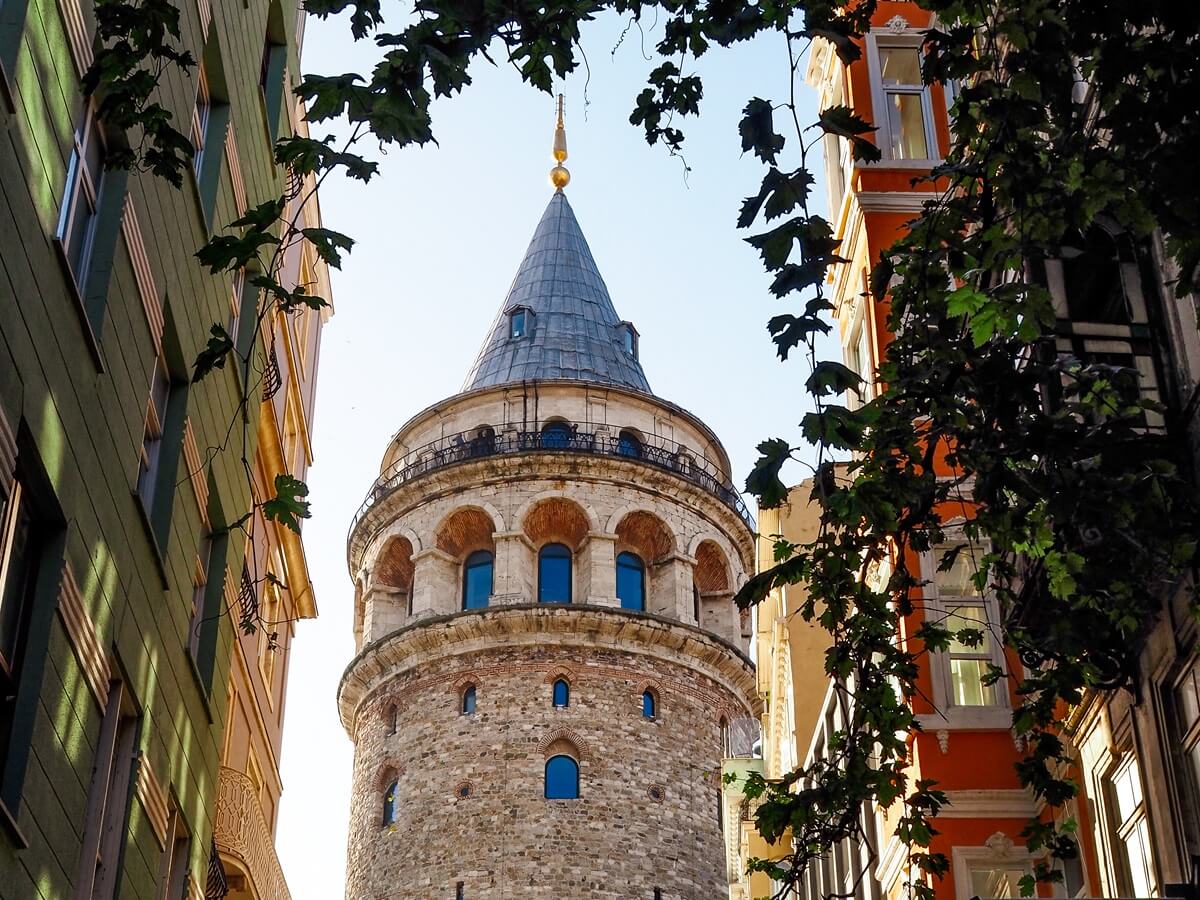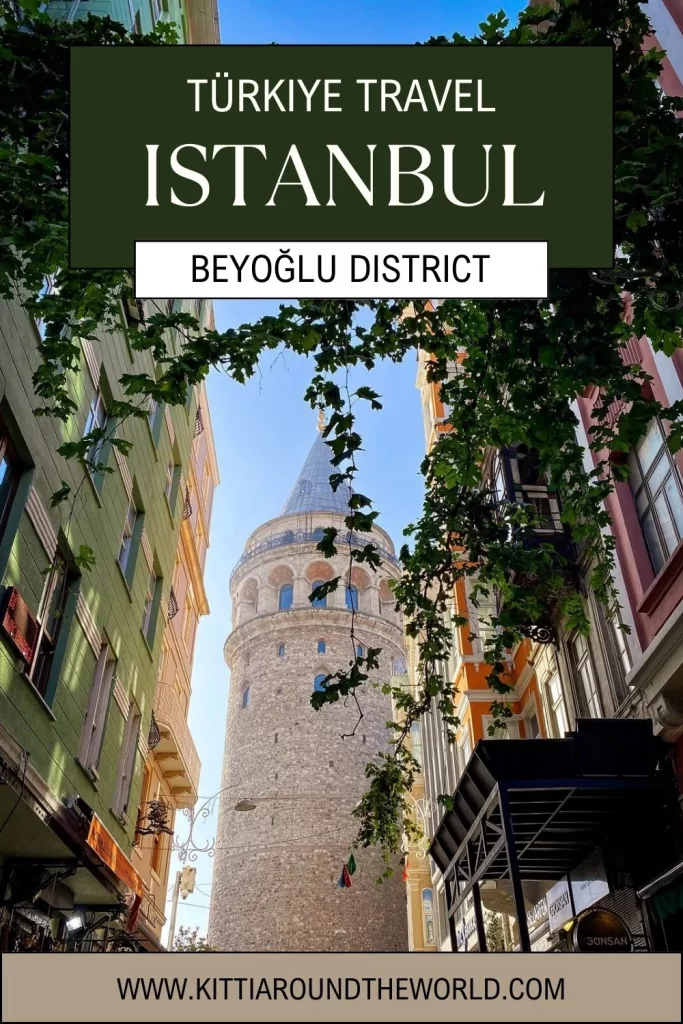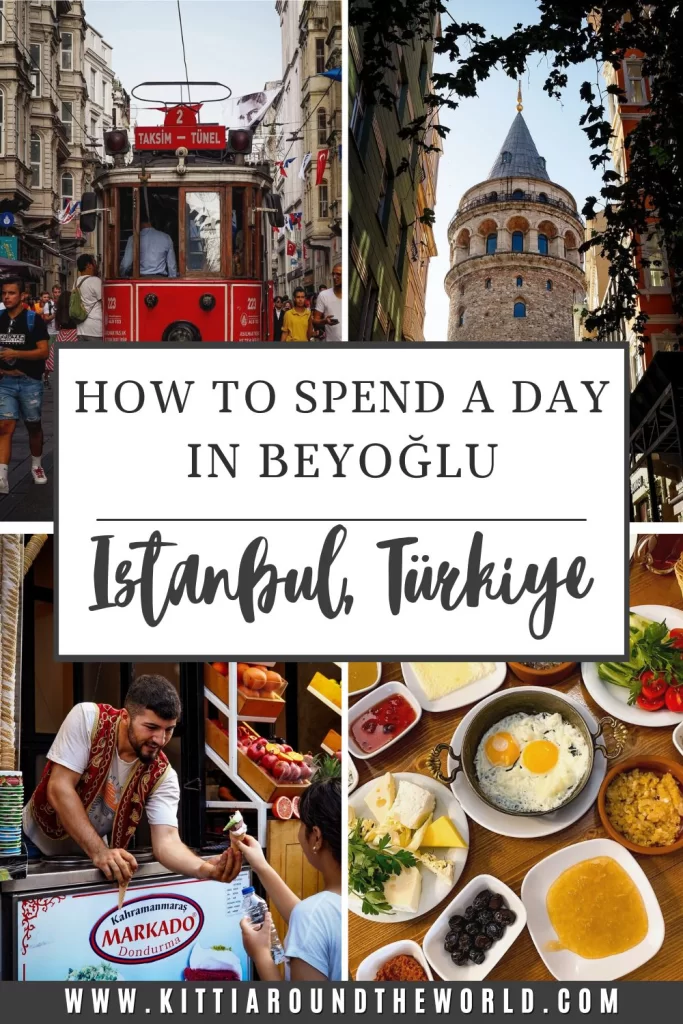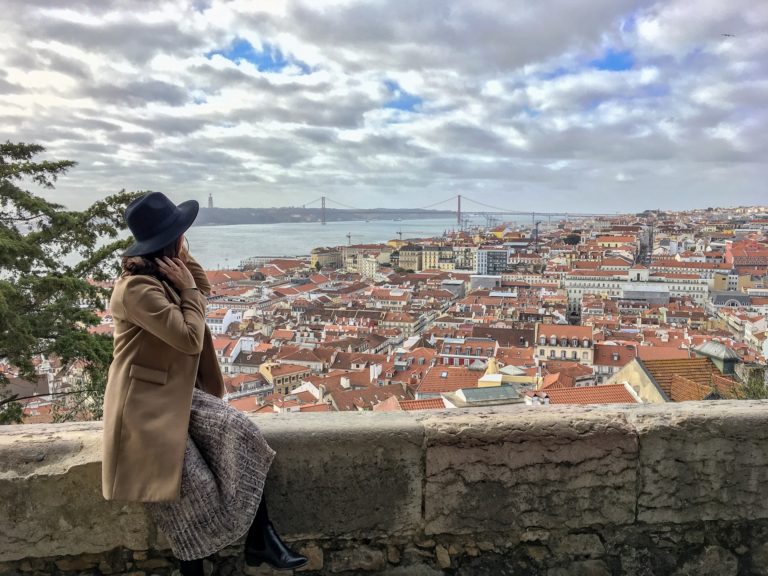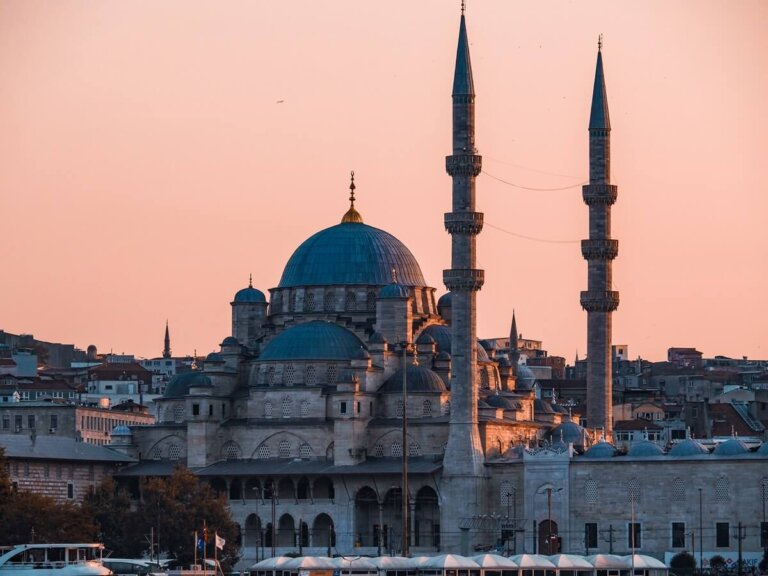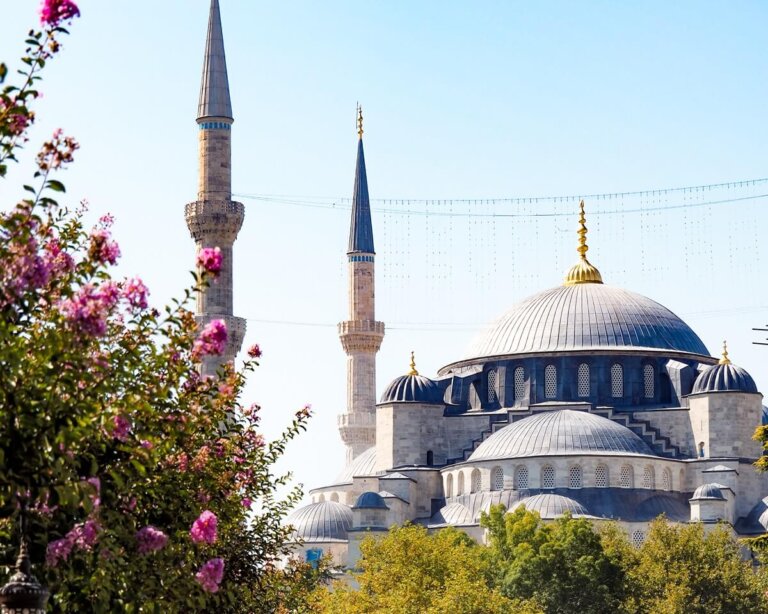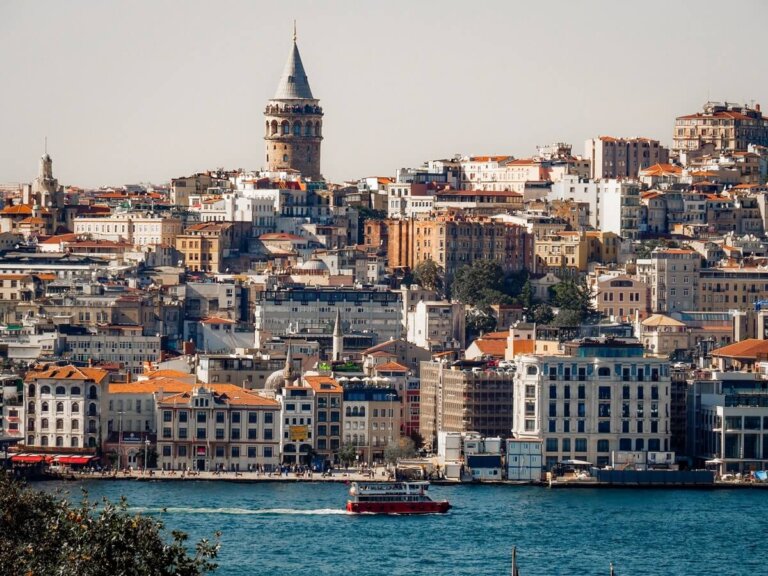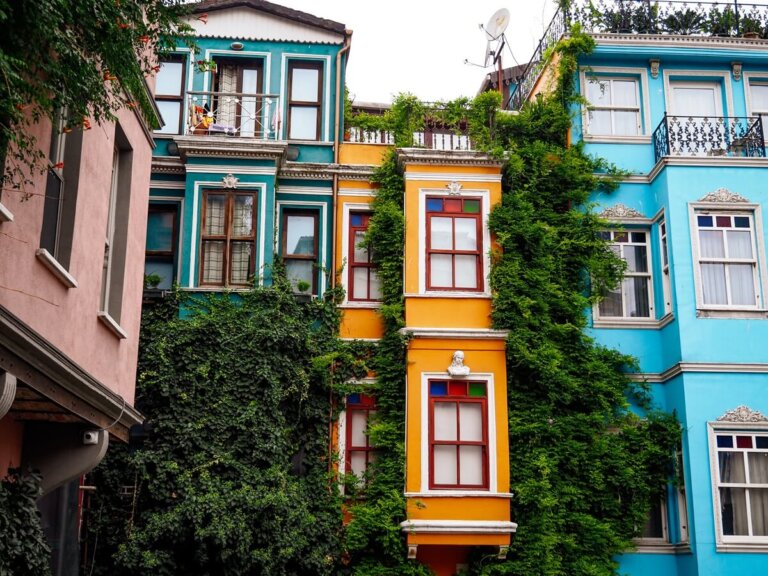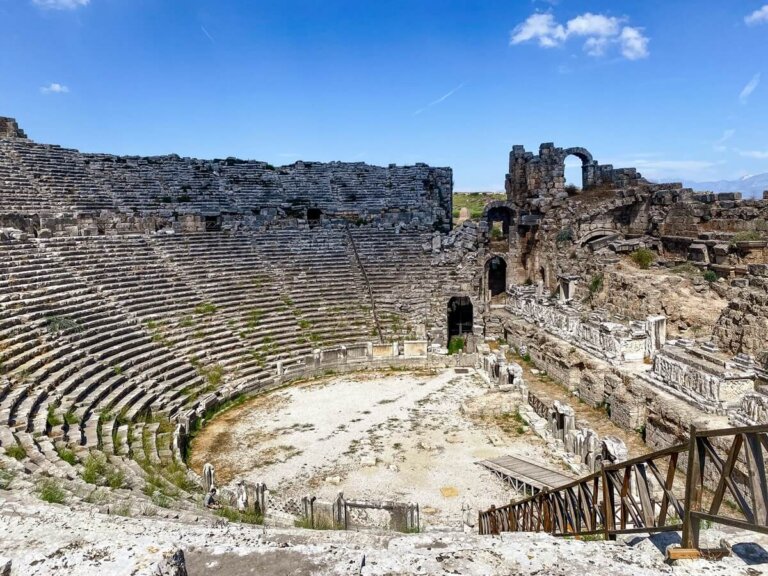Things to Do in the Beyoglu District of Istanbul, Türkiye
Most people visiting the historic centre of Istanbul (Sultanahmet) would also likely want to visit the more modern part of the city. In this guide you can read about some of the best things to do in the Beyoglu (Beyoğlu) district of Istanbul.
Separated by the Golden Horn, on the European side of Istanbul, Beyoglu is home to historical sites, restaurants, bars, cafes, and busy shopping streets. You definitely won’t have any trouble filling your day with things to do in this neighbourhood.
Disclosure: This post may contain affiliate links, which means we may receive a small commission if you click a link and purchase something. Clicking these links won’t cost you anything, but it will help us to keep this site up and running! Learn more about our affiliate policy.
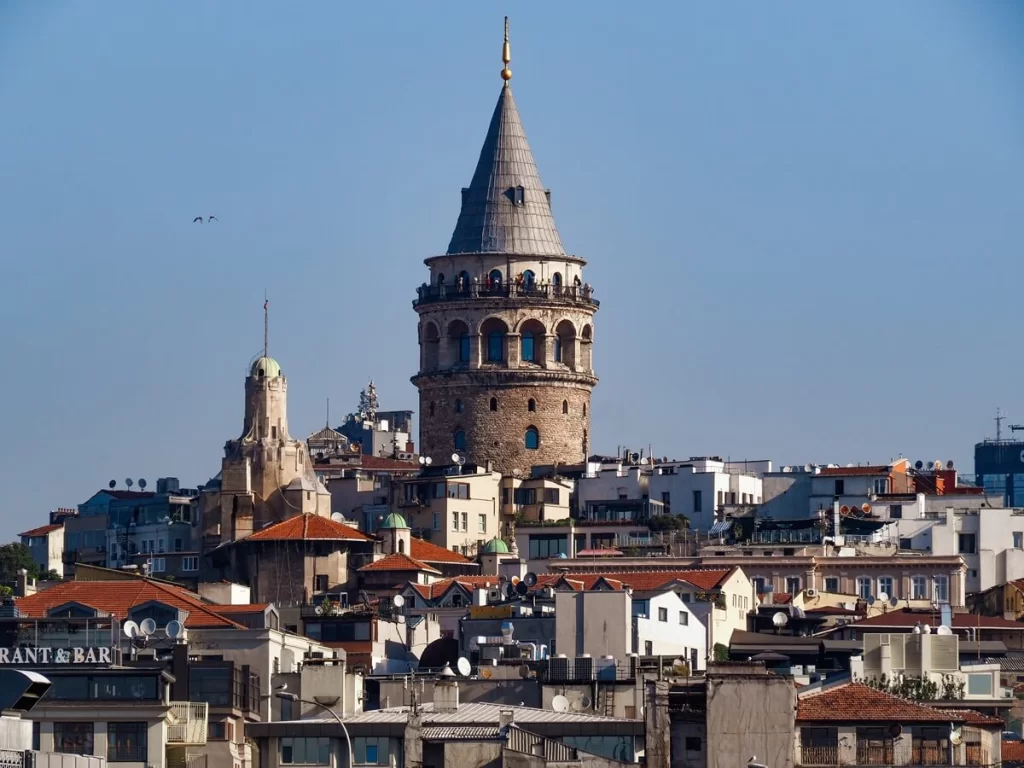
Things to Do in the Beyoglu District of Istanbul
Beyoglu (Beyoğlu) is one of the most visited neighbourhoods in Istanbul along with Sultanahmet. It is still located on the European side of the city, but on the opposite side of the Golden Horn to Sultanahmet.
In the past, this area was known as Pera and Galata, a European neighbourhood in a Muslim city. Galata used to be the area between the Galata Tower and the Karaköy coast and Pera stretched beyond that. For thousands of years Beyoglu has been a residential centre as well as a place where trade and religious, political, or cultural activities took place.
Today, Beyoglu is a lively area of Istanbul. It has many European-style apartments from the 19th and 20th centuries, as well as historical sites, restaurants, bars, busy shopping streets and also a vibrant nightlife.
You could easily spend a full day just in Beyoglu checking out the district’s top attractions. Below we’ve listed some of the top places you could consider adding to your itinerary.
Top Tip. Consider purchasing either a Museum Pass Istanbul or a Museum Pass Türkiye card if you’re planning on visiting multiple museums and archaeological sites whilst you’re in Istanbul or Türkiye. The dedicated Istanbul pass is 105 EUR and the Türkiye pass is 165 EUR. Please note that not everything we’ve listed below is included in these passes! See this website for more details.
Note that prices are prone to change so always check the official website for more up-to-date information.
Our Top Travel Resources to Visit Istanbul
- 🛏️ Find your accommodations with Booking.com
- 🎫 Book an organised tour in Istanbul with GetYourGuide
- 🛡️Don’t forget to buy travel insurance via SafetyWing
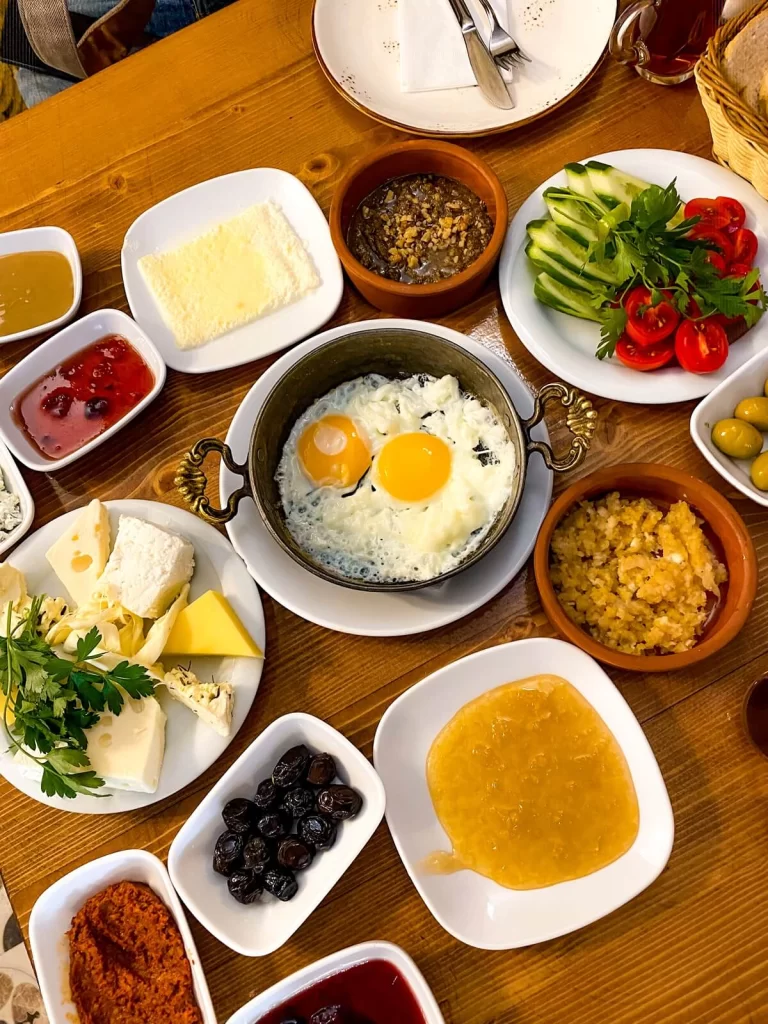
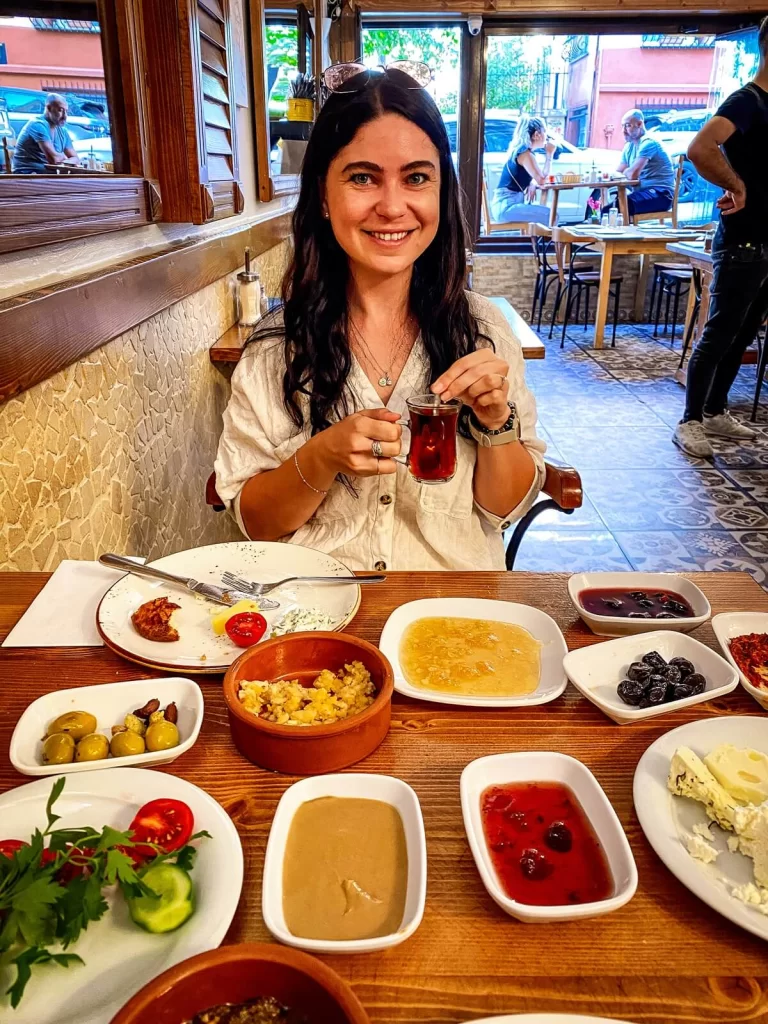
1. Traditional Turkish Breakfast at Van Kahvalti Evi
A great way to start your day exploring the Beyoglu district in Istanbul is to have a typical Turkish breakfast. Also known as ‘kahvalti’, a classic Turkish breakfast includes a variety of sweet and savoury bite-sized foods that will set you up well for the day.
Normally, if you order a Turkish breakfast they will give you eggs, cheese, black and green olives, tomatoes, cucumbers, sauces, fresh bread, jams, honey, and pastries. Of course, it wouldn’t be a traditional breakfast without an unlimited supply of black tea.
There are endless places you can enjoy a Turkish Breakfast in Istanbul. We went to Van Kahvalti Evi, which was a little more expensive than some other options, but the food was amazing and filled us up until dinner time.
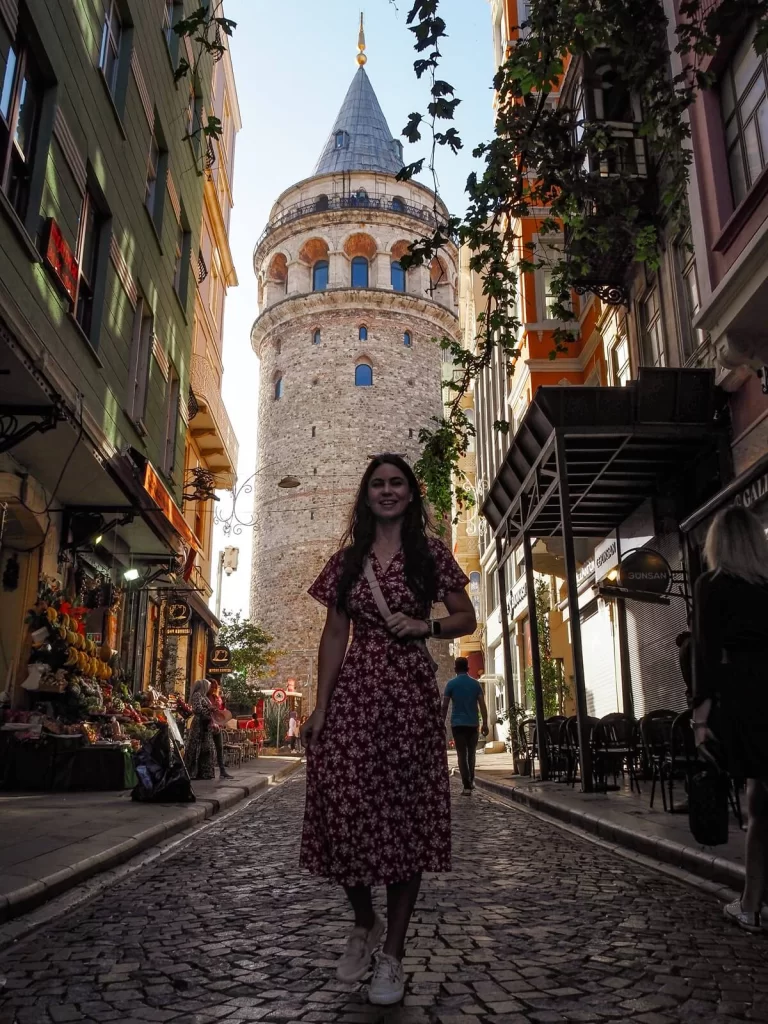
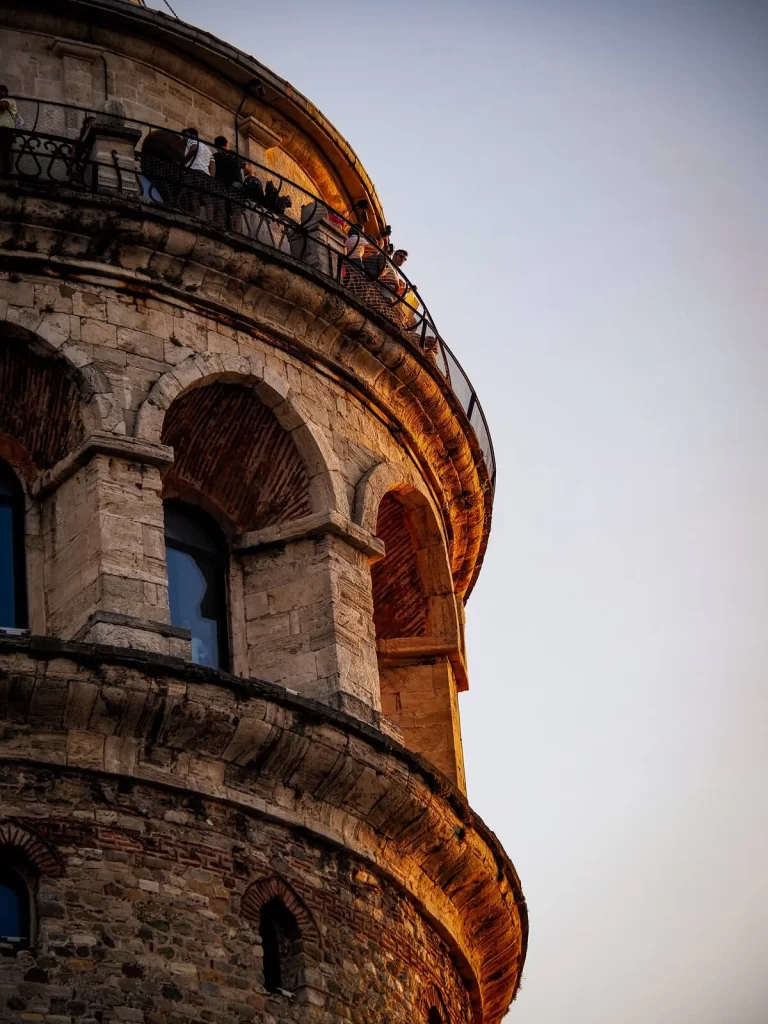
2. Galata Tower (Galata Kulesi)
One of the most recognisable landmarks in Istanbul is the Galata Tower, which also happens to be one of the city’s oldest structures.
Today’s tower was built in 1349, however its origin goes back to 507-508 AD, when the Byzantine Emperor Justinianos built a wooden tower to keep an eye on potential enemies entering the city. After the original wooden tower was destroyed, the Genoese rebuilt it in its current shape. It was damaged and restored a few more times during the Ottoman period. During this time it also functioned as a prison.
Although it’s not the tallest building in Istanbul any more, you can still enjoy panoramic views of the city from the top. You’ll be able to spot some of Istanbul’s main landmarks such as Hagia Sophia, the Blue Mosque, and the Galata Bridge.
Entry Fee and Opening Times. The Galata Tower is open every day between 8:30AM and 11PM. Entry is 30 EUR per person. You can also use a Museum Pass to get in.
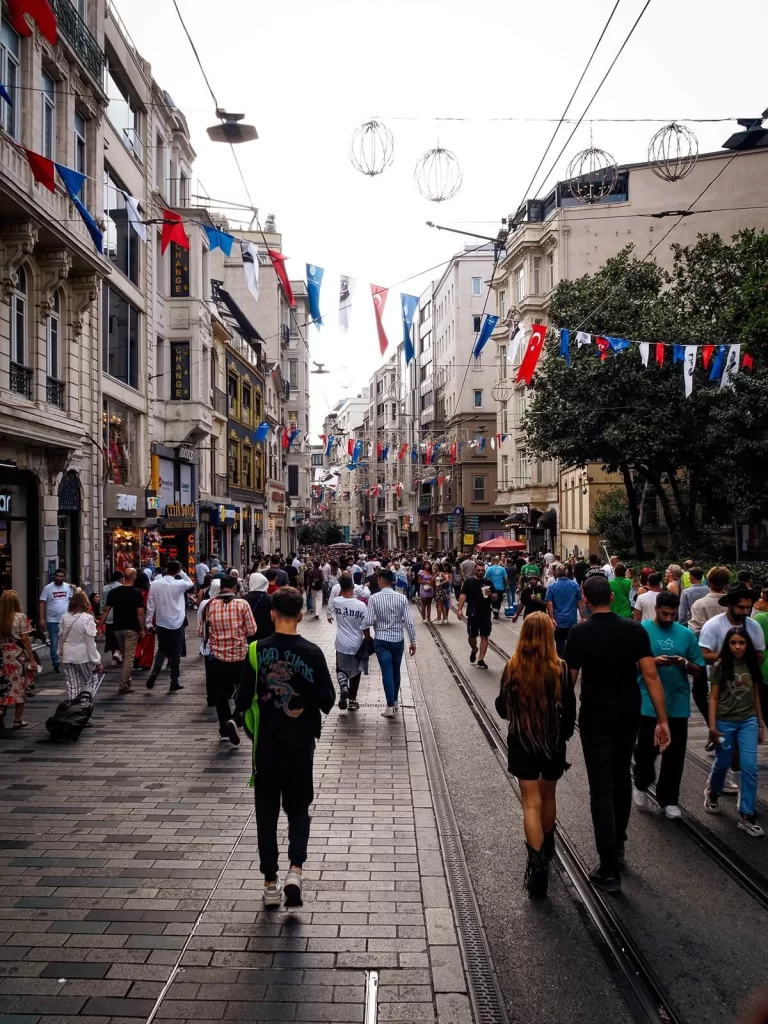
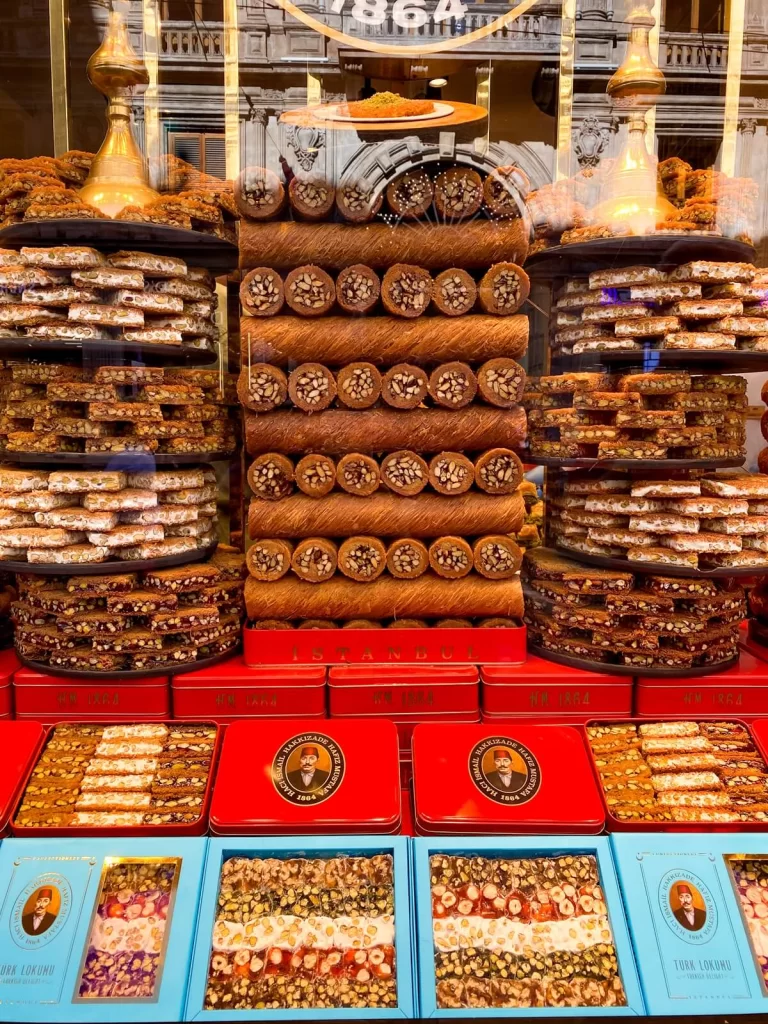
3. Istiklal Street (Istiklal Caddesi)
Running between the Galata Tower and Taksim Square is possibly the busiest street in Istanbul: Istiklal Street.
This 2-mile long street used to be called ‘Grand Avenue’ (Cadde-i Kebir) during the Ottoman era and ‘Grande Rue de Pera’ in French. It was renamed Independence Street (Istiklal Caddesi) in 1923 when the Republic of Turkey was founded.
Today, this popular pedestrianised street is a great mix of the modern and the traditional. As you make your way through the sea of people that walk down the street every day, you’ll quickly see why it attracts so many. Istiklal Caddesi is home to a ton of different modern and old-fashioned shops, eateries, art galleries, churches, passageways, museums and Neoclassical and Art Nouveau style buildings.
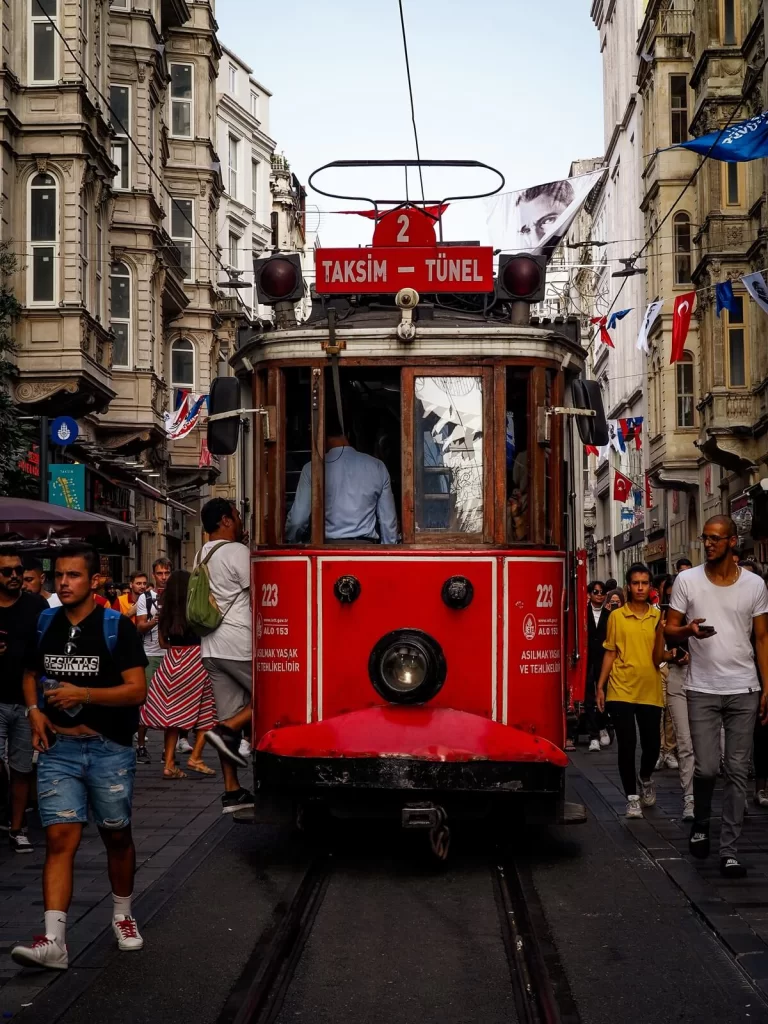
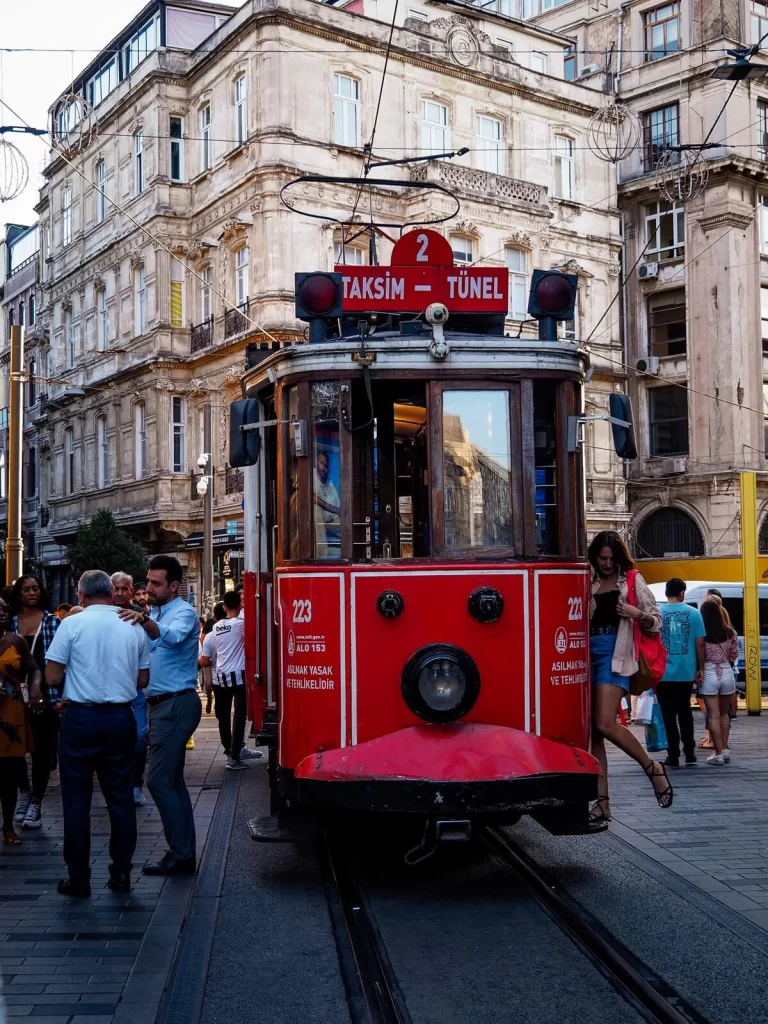
4. Taksim-Tünel Nostalgia Tramway
One of the most recognisable features along Istiklal Street is the Taksim-Tünel Nostalgia Tramway.
Istanbul used to have a large tram network, with the first horse-drawn tramline opening in 1871, and the line installed along Istiklal Street in 1883. Later, electric trams were introduced, replacing the horse-drawn trams. The tram network in Istanbul flourished up until 1956. Then, it slowly started to decline until they closed it completely in 1966. The Taksim-Tünel Nostalgia Tramway was then re-installed in 1990.
Today you can ride this charming red tram if you don’t fancy walking along Istiklal Caddesi. You can use your Istanbul Card (Istanbul Kart), which allows you to use public transport in Istanbul without the hassle of buying individual tickets.
Did you know? There are actually two heritage tramlines in Istanbul. One is the Taksim-Tünel tramway along Istiklal Street and the other is the Kadıköy-Moda tramway on the Asian side of Istanbul.
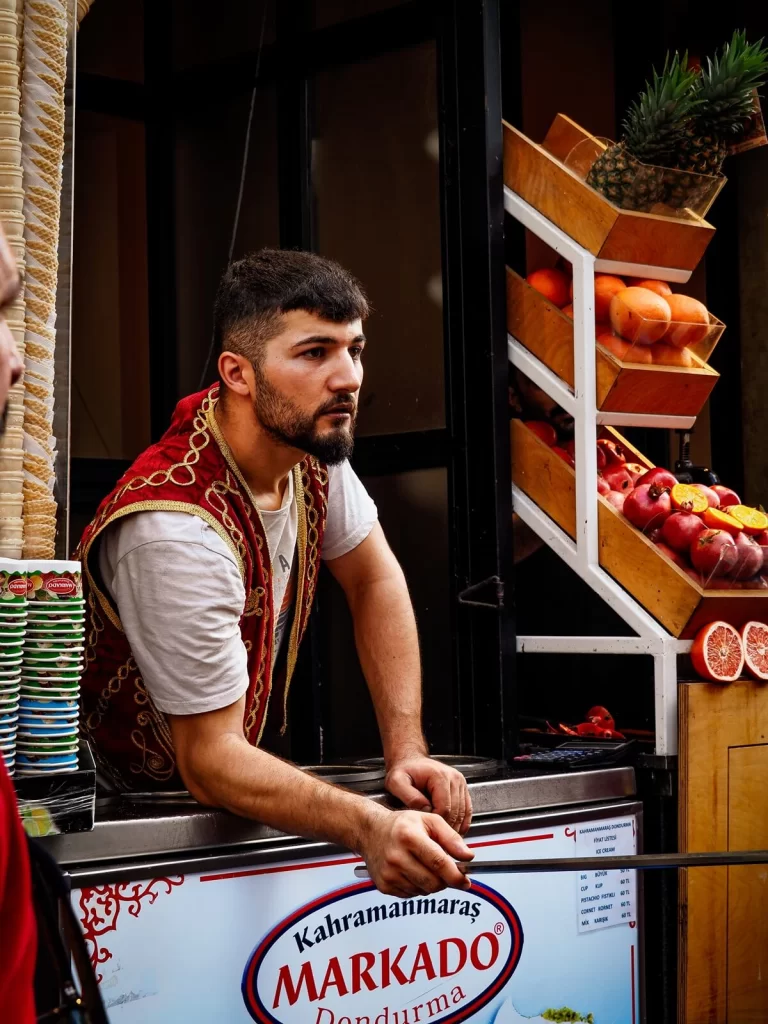
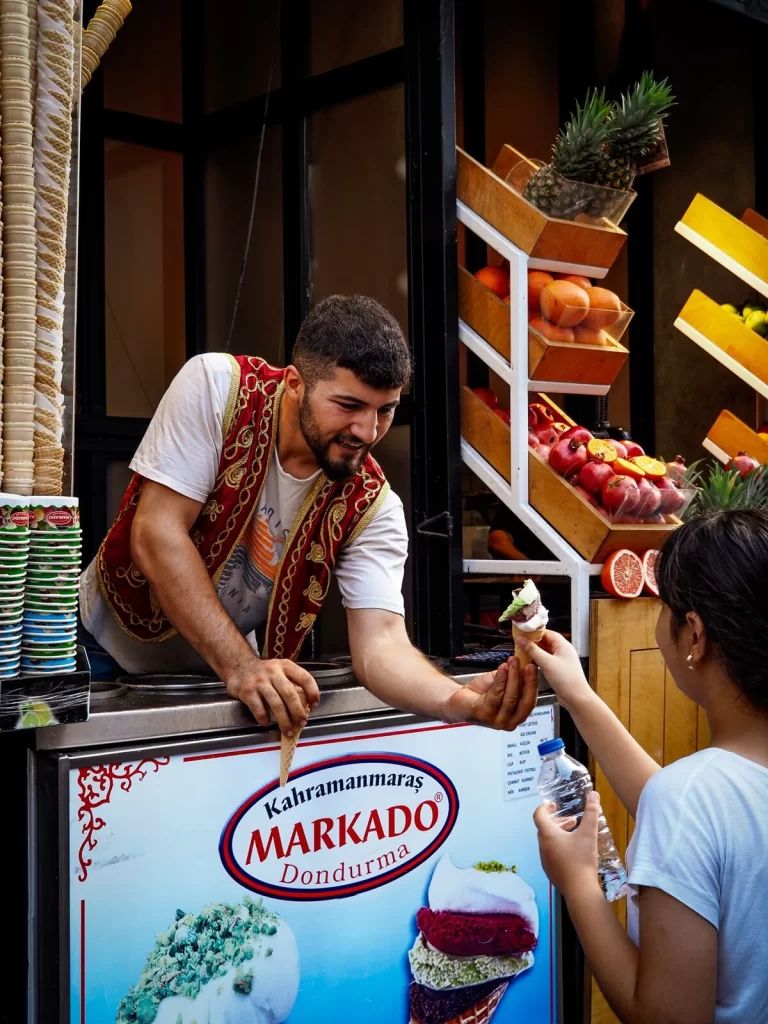
5. Traditional Turkish Ice Cream Along Istiklal street
If you’re in Istanbul you have to try some delicious Turkish ice cream, or dondurma. It’s definitely not your typical Italian gelato, or even the never melting ‘ice cream’ we tried in Cuenca, Ecuador. However, it doesn’t melt too easily and looks a bit like the western ice cream you’ll be familiar with.
Traditional Turkish ice cream is thick and chewy, and it has a stretchy texture. This is due to one of the main ingredients used to make it: salep (root of the wild orchid).
Now, buying Turkish ice cream can be just as much fun as eating it. You can spot Turkish ice cream sellers anywhere in Istanbul because they’re dressed in traditional outfits and there’s always a big crowd surrounding them. The reason for the crowd and laughter is because they perform some cool tricks with the ice cream before you’re finally allowed to sample it.
6. Cicek Pasaji (Çiçek Pasajı)
There are quite a few spots along Istiklal Street you should stop at before you get to Taksim Square. One of them is Cicek Pasaji (Çiçek Pasajı).
Translating to ‘Flower Passage’, this arcade was housed in a building called Cité de Péra which was a stunning European-style building built during the Ottoman era. During its heyday it had a lot of fancy shops. However, by the mid-20th century the building had started to decline. The stylish shops were replaced by meyhanes (tavernas) serving cheap food and beer. It was closed for a while when part of the building collapsed.
However, when tourism started to grow they renovated the building, which is now home to more upscale shops, cafes, and bars.
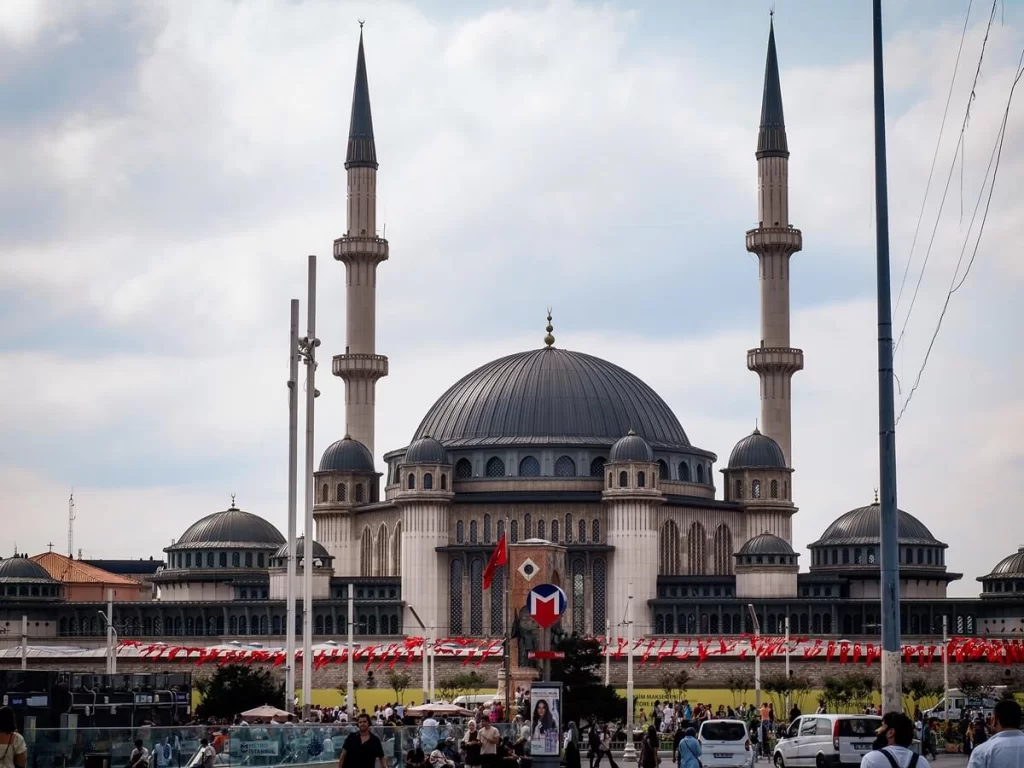
7. Taksim Square (Taksim Meydanı)
At one end of Istiklal Street is Taksim Square (Taksim Meydanı), one of the most popular spots in Istanbul.
In the heart of it is the Taksim Republic Monument (Taksim Cumhuriyet Anıtı), which commemorates the formation of the Turkish Republic in 1923.
The square is where celebrations, protests, official ceremonies, and many other activities take place today. Hotels and restaurants surround the square, which is also a popular meeting point thanks to being an important transport hub.
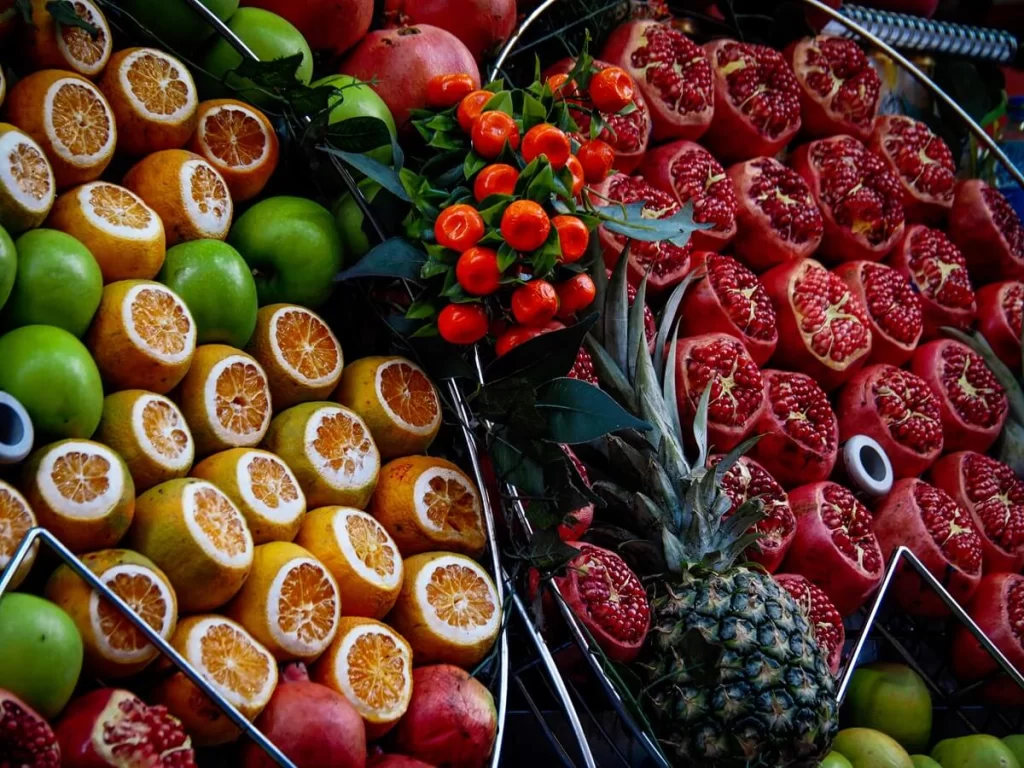
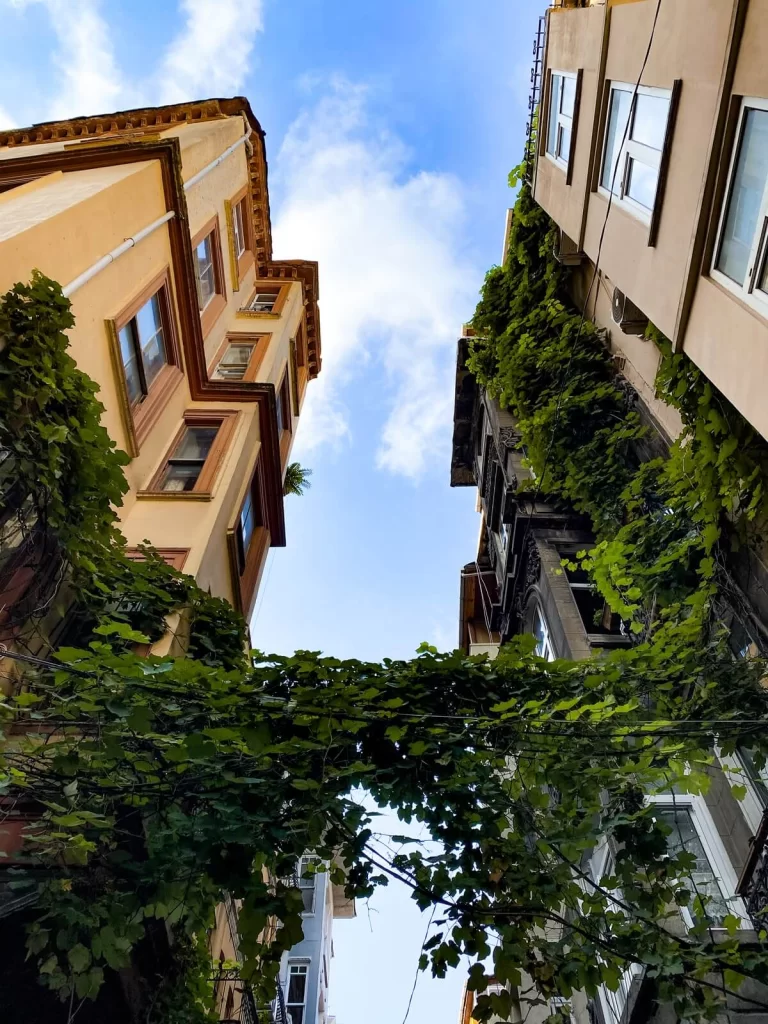
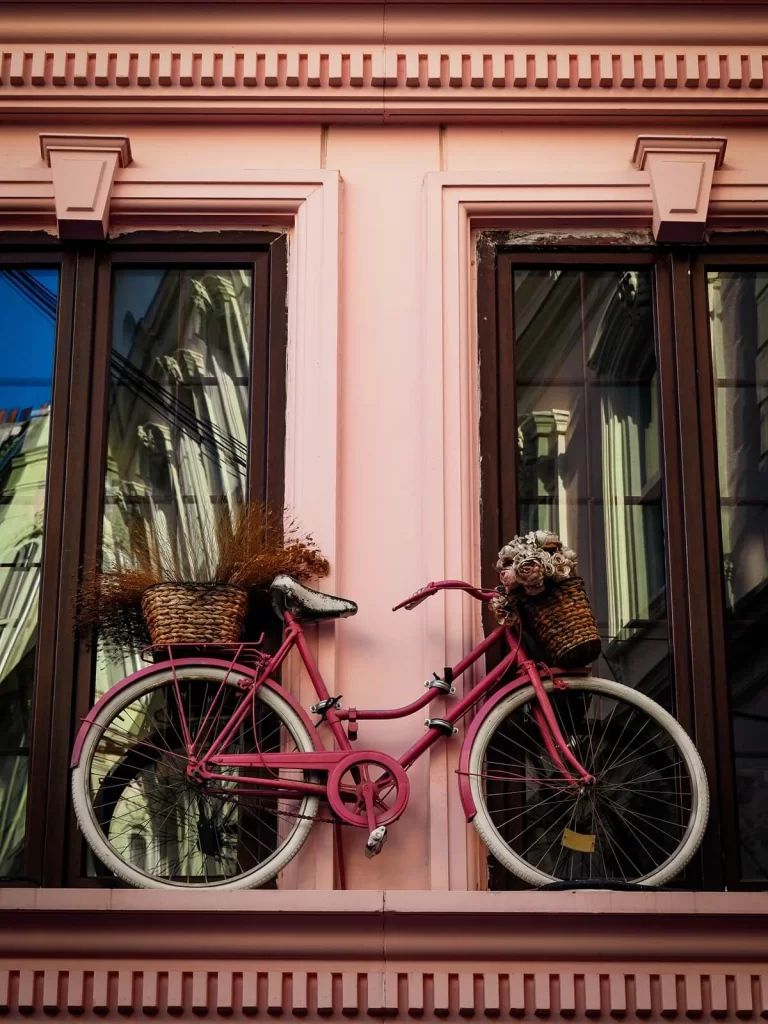
8. Cukurcuma (Çukurcuma) and Cihangir Quarters
If you enjoy historical buildings, art, museums, antique shopping and cute cafes, then definitely go for a wander around the Cihangir and Cukurcuma areas of the Beyoglu district. Below are a few points of interest:
The Museum of Innocence (Masumiyet Müzesi). This popular museum is dedicated to a novel with the same name written by Orhan Pamuk.
Orhan Kemal Museum. It houses Orhan Kemal’s belongings and works. He was one of Turkey’s most famous writers.
Ağa Hammam (Ağa hamamı). This popular Turkish bath was built in 1454, making it one of the oldest ones in Istanbul. Here you can enjoy an authentic hammam experience.
Çukurcuma Bath (Çukurcuma Hamamı). This hammam has a bit more of a modern feel to it, but still provides a great Turkish bath experience.
Cihangir Mosque (Cihangir Camii). A small mosque where you can enjoy some beautiful views of the Bosphorus.
9. Best Museums in the Beyoglu District of Istanbul
There are plenty of museums in the Beyoglu District of Istanbul that you can visit depending on your interests. Note that some of the museums will require an entry fee and some are also closed on Mondays. Below we’ve listed a few of the popular ones you could add to your itinerary:
Istanbul Museum of Modern Art (İstanbul Modern Sanat Müzesi). It is the country’s first modern and contemporary art gallery, and houses modern and contemporary Turkish art. Entrance fee is 350 TL.
The Museum of Innocence (Masumiyet Müzesi). Located in the Çukurcuma area of the Beyoglu District, this museum is dedicated to a novel with the same name written by Orhan Pamuk. Entry costs 300TL, but you can enter for free if you have a copy of the novel.
Pera Museum (Pera Müzesi). This art museum is located along Istiklal Street and houses a large collection of Turkish and Islamic art. Entrance is 100TL.
Museum Of Illusions Istanbul (İllüzyon Müzesi). It is a fun, interactive museum located along Istiklal Street with over 60 illusions to see and experience.
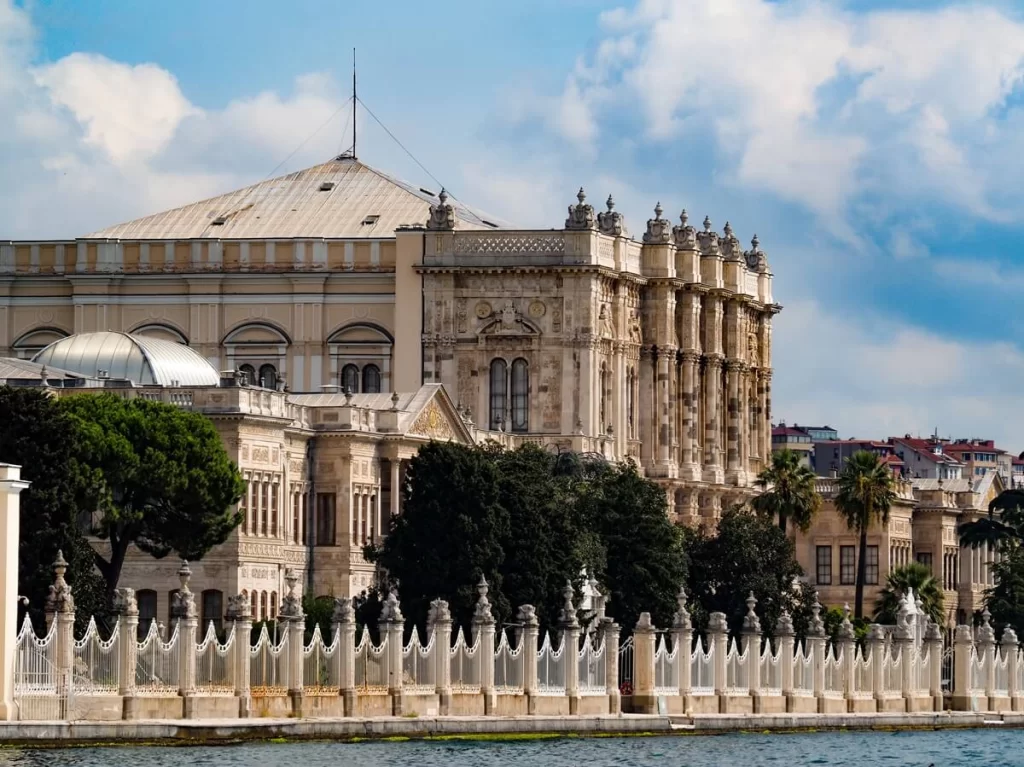
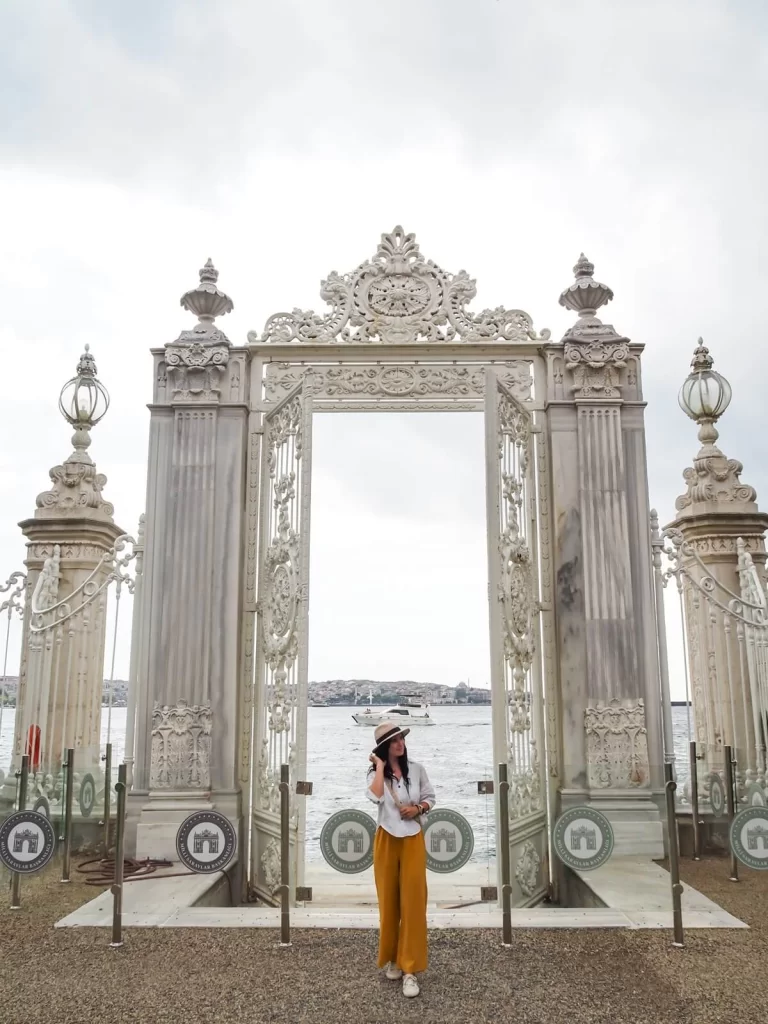
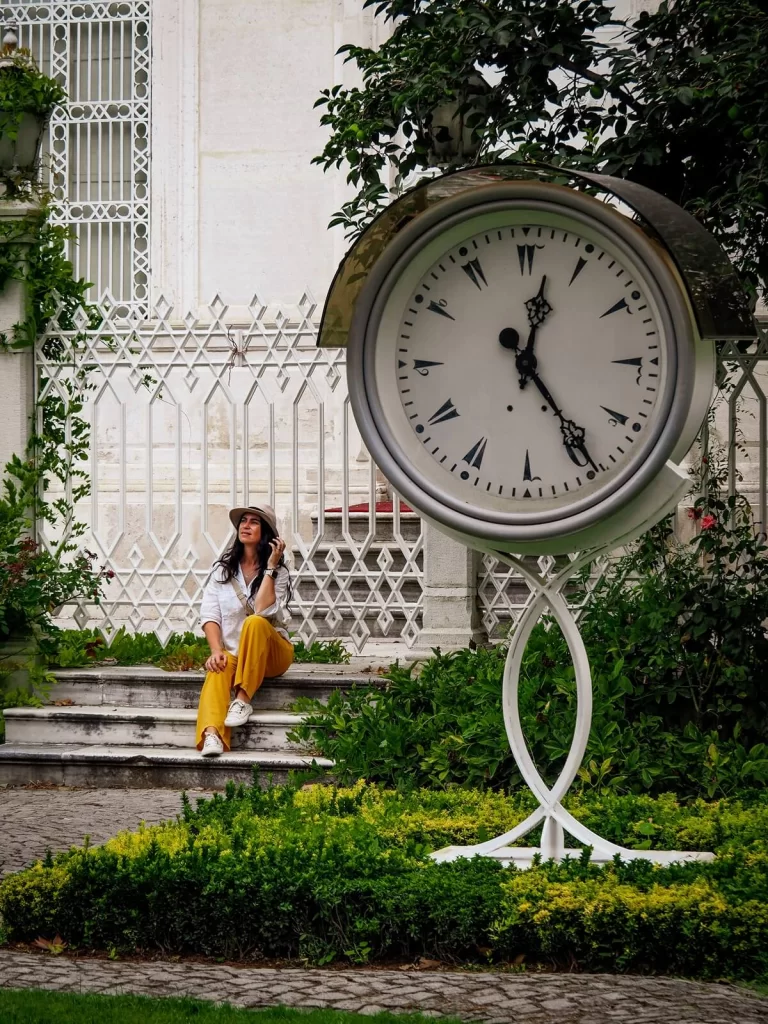
10. Dolmabahce Palace (Dolmabahçe Sarayı)
Located along the banks of the Bosphorus, just slightly outside the Beyoglu district of Istanbul, is the stunning Dolmabahce Palace.
If you thought that Topkapi Palace was huge, then wait until you visit this one. Comprising 45,000 square metres, it is the largest monoblock palace in the whole country. It was built between 1843 and 1856 by Sultan Abdülmecid I, who wanted to live in a more contemporary style of palace. Dolmabahce Palace was home to six Sultans between 1856 and 1924. It was then a presidential residence until 1949, and has been a museum since 1984.
Within the palace’s 258 rooms and 46 halls you can get a glimpse of how the Ottoman royals lived. They are full of impressive architecture, decorations, and large collections of art and furniture.
Note. The palace is open between 9AM and 4PM every day except Mondays and Thursdays. Unfortunately, you’re not allowed to take photos inside. Security guards really watch you and will shout at you if you try to snap some.
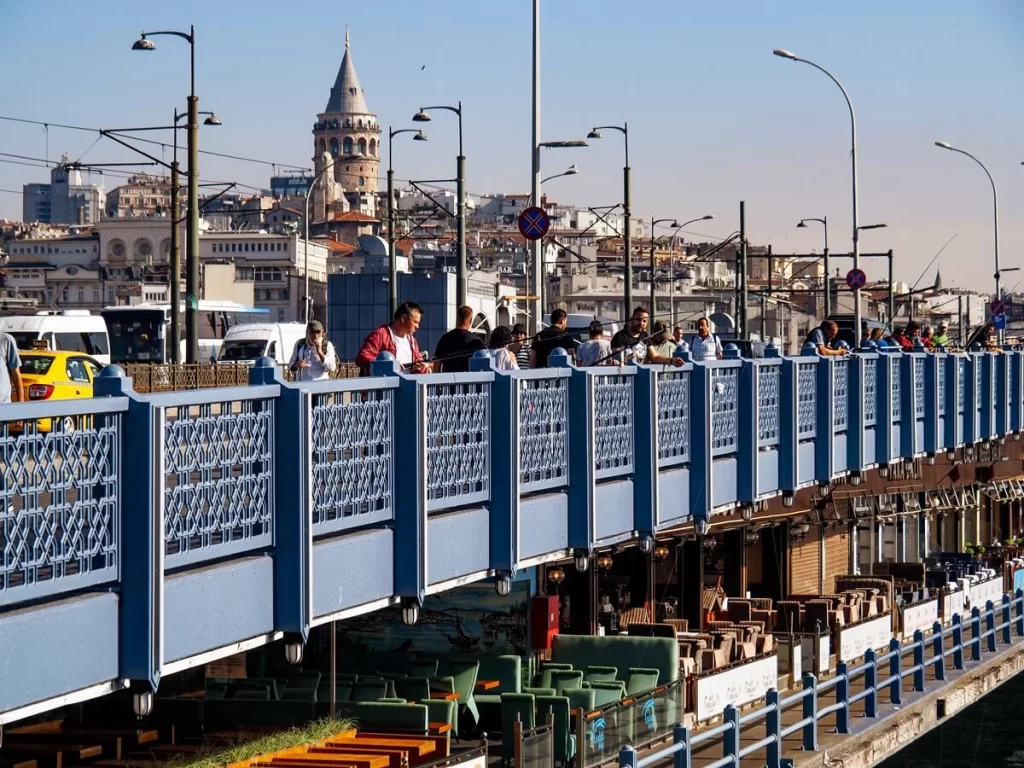
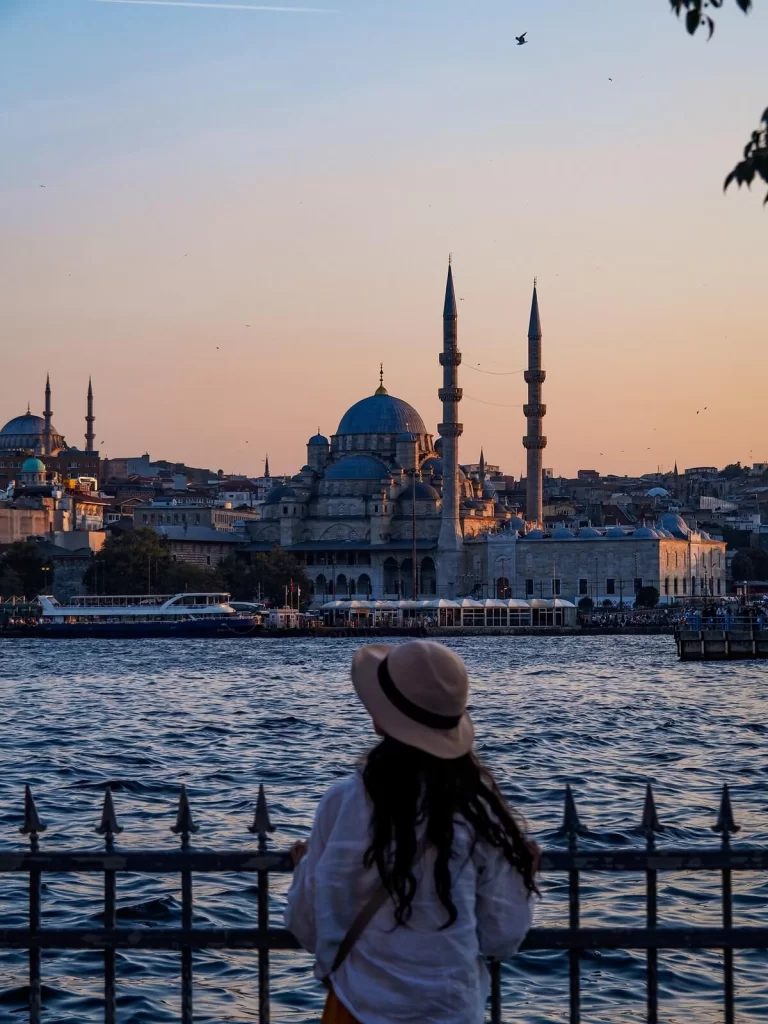

11. Galata Bridge (Galata Köprüsü)
A great way to either start or end your day in Beyoglu is to walk across the Galata Bridge. The bridge stretches across the Golden Horn, connecting the Beyoglu and Sultanahmet districts of Istanbul. It has been rebuilt about five times over the years, with the 490m long bridge you see today having opened in 1994.
You’ll quickly notice that people fish along the bridge all day every day. We’re not sure how much they catch but it definitely gets pretty busy. There are also some seafood restaurants and cafes underneath the bridge, although they might be on the pricier side. You can however just walk down here and enjoy the views of the old and more modern sections of Istanbul. It’s also a great place to watch the sunset from.
Final Thoughts on Visiting the Beyoglu District of Istanbul
We actually stayed in this part of Istanbul, which was a great decision because we managed to see the neighbourhood at different times of the day. One of our highlights was walking down Istiklal Street super early in the morning and then witnessing just how busy it got later on. We loved seeing the mix of old and modern architecture, as well as all the incredible looking shops and restaurants, as we were wandering around Beyoglu.
Have you ever been to the Beyoglu district of Istanbul before? If so, how much of the area did you manage to see and what was your favourite spot? If not, would you add a visit to Beyoglu to your Istanbul itinerary? Let us know in the comments below.
Now, let your adventure begin,

Our Top Travel Resources
Accommodation: For hotels we always use Booking.com and Hostelworld for hostels. We also book longer stays on Airbnb or Vrbo.
Flights: To find the best flight prices we always check Skyscanner, Google Flights or WayAway. Then we also check the airlines’ websites too for comparison.
Car Rentals: We use Discover Cars when we want to rent a car as it compares local, national and international companies.
Activities: If we book organised tours we always check either GetYourGuide or Viator.
Foreign Currency: Whenever we can we prefer to pay in local currency and for that we always use our Wise card. We can easily withdraw money from the ATM or pay by card at most shops and restaurants.
Travel Insurance: We never go anywhere without travel insurance. You never know what will happen on your trip, so good travel insurance like SafetyWing can protect you in case of injury, illness, theft and cancellations.
eSIM and VPN: To get data abroad we use Airalo which is an app that allows you to download a prepaid eSIM to your phone in over 190 countries. Make sure to have a VPN to avoid hackers accessing your personal data when using public WIFI. We use Surfshark which is the only VPN that offers one account on unlimited devices.

